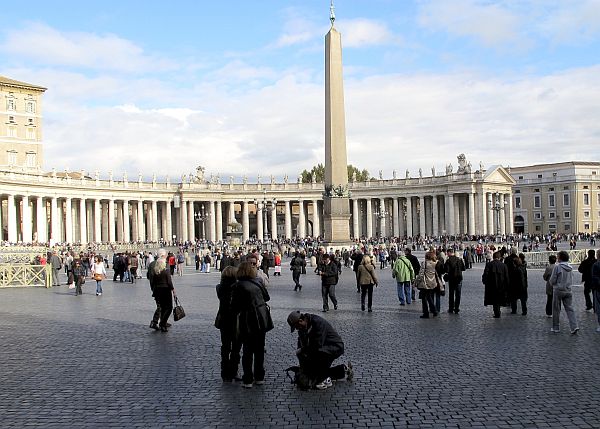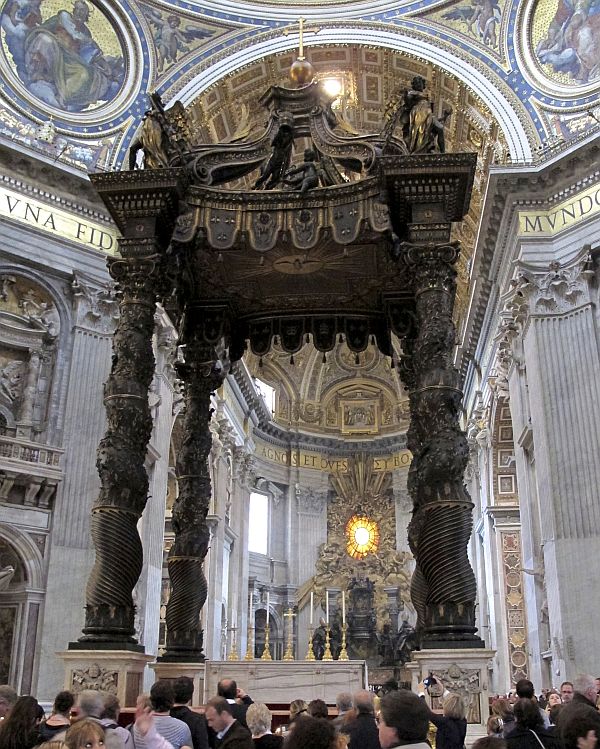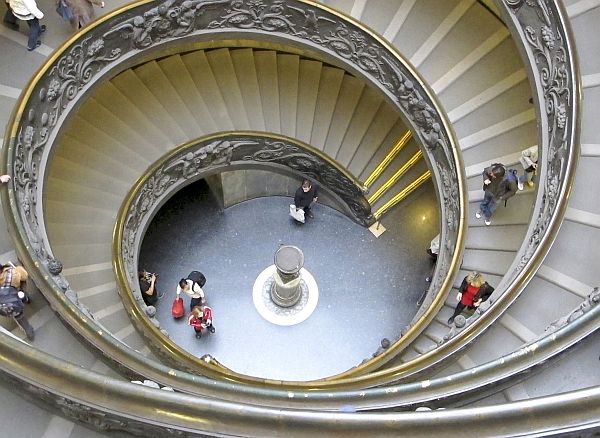
St. Peter’s Square
THERE are a handful of countries around the world that are comprised of a single city: Luxembourg, Lichtenstein, San Marino, Andorra, and Monaco come to mind.
The technical term is a microstate, and one that my wife and I visited is Vatican City, the Holy See, the head of the Roman Catholic Church. Like many other microstates, it’s completely surrounded within another country,in the case of the Vatican City it is surrounded on all side by the city of Rome inside of the country of Italy.
Vatican City is the smallest of all microstates in both population and area with only 842 official residents and an area of just 44 hectares. Its economy is based on the Roman Catholic Church and the main sources of local income are through the sales of postage stamps, tourist items, and admission to the official museums. During our visit a guide informed us that there are an estimated six million visitors annually to the Vatican Museum alone, which raises over US$100 million every year.
We started our morning by taking the train to San Pietro station, located just a few minutes walk from the Vatican.
We walked through a few winding streets until it opened up to the vast St. Peter’s Square with the fountains and the obelisk, which was moved from Egypt under the order of the Emperor Augustus. During our visit they were setting up for a ceremony so areas were off limits but luckily we had visited a few times before.

St. Peter Baldacchino by Bernini
Next we entered the massive St. Peter’s Basilica. The general entrance is free, but expect long lines during peak times. A word of caution for the Basilica and all areas of the Vatican: Make sure to dress appropriately, even during hot summer months. While these are tourist sites, they
are mainly churches and museums and dress codes are enforced. It is common to see those not adhering to dress code being turned away. It would be disappointing to spend the time and money only to be turned away by not following policy.
St. Peter’s Basilica was completed in 1626 and was built over the burial site of Saint Peter. There are numerous works of art throughout the interior by such distinguished artists as Michelangelo and Bernini. The entire building and contents are considered a true Renaissance masterpiece.
The most obvious feature inside is the giant baldacchino, the sculpture that sits above the remains of Saint Peter. It is the largest piece of bronze in the world and was the first piece completed by Bernini inside the Basilica.
After walking throughout the main floor, we decided to head for a harder-to-find area: the papal crypt in the grotto below. Admission is also free.
There are signs to the entrance but it helps to do some research before your visit. The crypt contains the remains of popes dating back to the 6th century with Saint Gregory the Great. It used to contain the remains of Pope Saint John Paul II, but they were moved upstairs next to the Chapel of the Blessed Sacrament just before his beatification in 2011. While photos are not allowed inside the crypt, the memories made surrounded by such history will last a lifetime.
The next part of our visit was the Vatican Museum and Sistine Chapel. As with most trips, prior research can pay off big time.
The line for tickets regularly stretches for blocks at a time, but there is an option to purchase online in advance. Instead of wasting valuable hours waiting in line, visitors with tickets purchased online are given a specific time to go through a separate entrance without waiting.
The ticket price is 16 Euro for the regular admission. The online fee is only 4 Euro extra, well worth it to not waste half the day standing in line.
Like everything else in the Vatican, the Vatican Museum would take weeks or years to properly go through.
The museum houses 70,000 different pieces of art, of which 20,000 are on display throughout the 54 galleries. It is impossible to list even a fraction of the art we saw on display, but it contained such modern art luminaries as van Gogh, Chagall, Dali and Picasso as well as more classic artists such as Raphael, Bellini and Michelangelo.
The final part of the Vatican Museum tour is the renowned Sistine Chapel. The chapel is well known for both its religious and artistic significance.
The chapel has been the venue of the conclave to elect each successive pope since the year 1492. Its most famous feature is the striking artwork on the walls and ceiling painted by master artist Michelangelo.

Double helix staircase at the Vatican museum
He was commissioned by Pope Julius II to paint the ceiling and it took five years to complete from 1508 to 1512. Though it was painstaking work lying on his back in confined and awkward areas, the result has drawn visitors to the chapel ever since they were completed over 500 years ago.
Over 20 years after completing the ceiling, Michelangelo returned and painted The Last Judgment on the altar wall.
As it is a chapel, respect must be given in the form of silence and there are monitors on hand to caution visitors who become too loud. Photographs
are also not allowed inside the chapel. The original artwork is over 500 years old and while it has been restored several times over the centuries, there is an effort to put as little stress on it as possible. While one flash from a camera may not do damage, imagine the 6 million annual visitors each taking
a dozen photographs. Over a decade’s time that amounts to 720 million flashes of light, possibly enough to cause permanent damage.
But all that being said, we still saw a lot of people sneaking photos, especially as everyone has a camera phone. I guess it is a sign of the times.
As our day at the Vatican City came to a close, we were exhausted but fulfilled. The history contained in those 44 hectares is unlike any other.
Each step contains a bit of historical significance, Roman Catholic or not.
Bring a map, research ahead of time in order to appreciate what is being viewed, and organize as much in advanceinstead of spending the day in line.
Schedule permitting, it would be best and less hectic to break a visit into two days with one day for the Basilica and Square and the second for the museum and Sistine Chapel. And if found with more time, don’t forget the surrounding eternal city of Rome.

